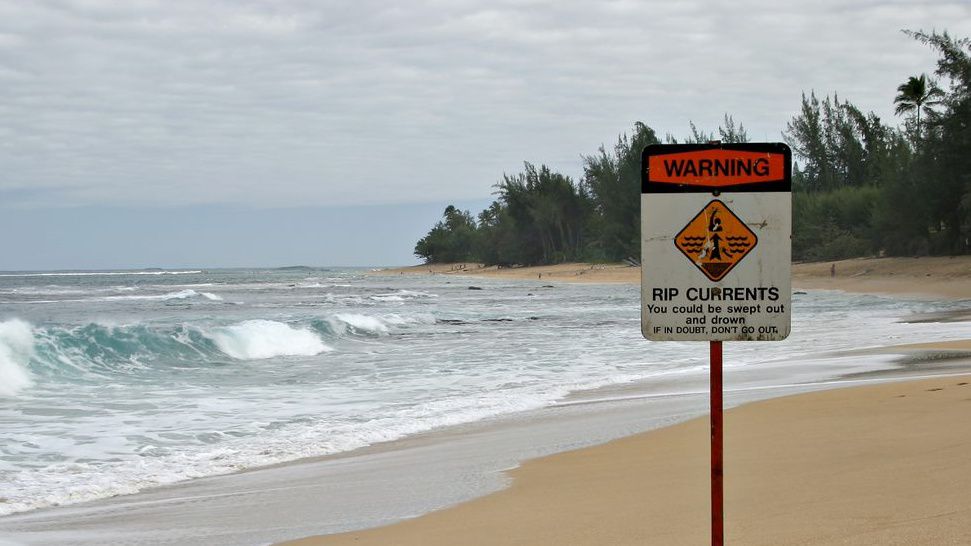Before cooling off in the ocean this weekend, beachgoers need to look for the red flags that warn about dangerous rip currents.
The National Weather Service has reported high risk of rip currents on much of the North Carolina coast this week, starting Wednesday.
A rip current is a strong, narrow flow of water that begins near the shore and extends past the surf zone. A strong rip current can pull even the strongest swimmers into deeper water.
High risk, signaled with a red flag flying from a lifeguard stand, means there are powerful or multiple rip currents, and everyone should stay out of the water.
On Wednesday, two people on a paddle board in Oak Island were swept 2,000 feet from shore and were unable to make it back due to the strong currents. Fortunately, quick response from an Oak Island Water Rescue unit meant the pair were back on shore within 20 minutes.
A report sent out the next day attributed the success in part to the two people staying calm and following directions throughout the process. The report also reiterated the importance of always being aware of beach conditions and wearing a life jacket during any open-water activities.
Those were not the only rescues on North Carolina beaches this week, the National Weather Service reported more than 70 rescues from beaches along the coast.
There were 35 rescues at Carolina Beach on Wednesday and Thursday alone, as well as 14 at Wrightsville Beach and 20 at Kure Beach. On Friday, numerous rip current rescues were reported at New Hanover County beaches, including 15 people rescued at Carolina Beach, four at Wrightsville Beach and one at Kure Beach, according to the National Weather Service.
With temperatures climbing to the mid-90s this weekend, a dip in the ocean may be tempting, but it's important to stay aware of weather conditions, listen to directions from lifeguards or other beach authorities and not go into the ocean alone.
If you do get caught in a rip current, remember these tips from the National Weather Service:
Stay calm, rip currents won’t pull you under the water
Don't swim against the current
Swim out of the current, perpendicular with the shore
If you can’t swim out, float or tread water while waving or yelling for assistance









